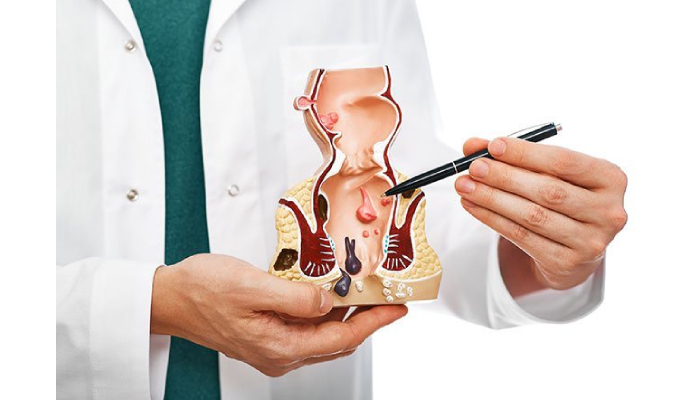What Are Piles?
Piles are inflamed and swollen collections of tissue in the anal area. hey can have a range of sizes, and they may be internal or external. Internal piles are normally located between 2 and 4 centimeters (cm) above the opening of the anus, and they are the more common type. External piles occur on the outside edge of the anus. Piles is another term for hemorrhoids. Hemorrhoids are collections of inflamed tissue in the anal canal. They contain blood vessels, support tissue, muscle, and elastic fibers. Many people have piles, but the symptoms are not always obvious.

Causes
Piles are caused by increased pressure in the lower rectum. The blood vessels around the anus and in the rectum will stretch under pressure and may swell or bulge, forming piles. This may be due to:
- chronic constipation
- chronic diarrhea
- lifting heavy weights
- pregnancy
- straining when passing a stool
Symptoms
- A hard, possibly painful lump may be felt around the anus. It may contain coagulated blood. Piles that contain blood are called thrombosed external hemorrhoids
- After passing a stool, a person with piles may experience the feeling that the bowels are still full.
- Bright red blood is visible after a bowel movement.
- The area around the anus is itchy, red, and sore.
- Pain occurs during the passing of a stool.
- Excessive anal bleeding, also possibly leading to anemia
- Infection
- Fecal incontinence, or an inability to control bowel movements
Treatment
Treatment without surgery
- rubber band ligation: a band is placed around your piles to make them drop off
- sclerotherapy: a liquid is injected into your piles to make them shrink
- electrotherapy: a gentle electric current is applied to your piles to make them shrink
- infrared coagulation: an infrared light is used to cut the blood supply to your piles to make them shrink
Surgery
- haemorrhoidectomy: your piles are cut out
- stapled haemorrhoidopexy: your piles are stapled back inside your anus
- haemorrhoidal artery ligation: stitches are used to cut the blood supply to your piles to make them shrink
Prevention
- Eat high-fiber foods. Eat more fruits, vegetables and whole grains. Doing so softens the stool and increases its bulk, which will help you avoid the straining that can cause hemorrhoids. Add fiber to your diet slowly to avoid problems with gas.
- Drink plenty of fluids. Drink six to eight glasses of water and other liquids (not alcohol) each day to help keep stools soft.
- Consider fiber supplements. Most people don’t get enough of the recommended amount of fiber — 20 to 30 grams a day — in their diet. Studies have shown that over-the-counter fiber supplements, such as psyllium (Metamucil) or methylcellulose (Citrucel), improve overall symptoms and bleeding from hemorrhoids.
- Don’t strain. Straining and holding your breath when trying to pass a stool creates greater pressure in the veins in the lower rectum.
- Go as soon as you feel the urge. If you wait to pass a bowel movement and the urge goes away, your stool could dry out and be harder to pass.
- Exercise. Stay active to help prevent constipation and to reduce pressure on veins, which can occur with long periods of standing or sitting. Exercise can also help you lose excess weight that might be contributing to your hemorrhoids.
